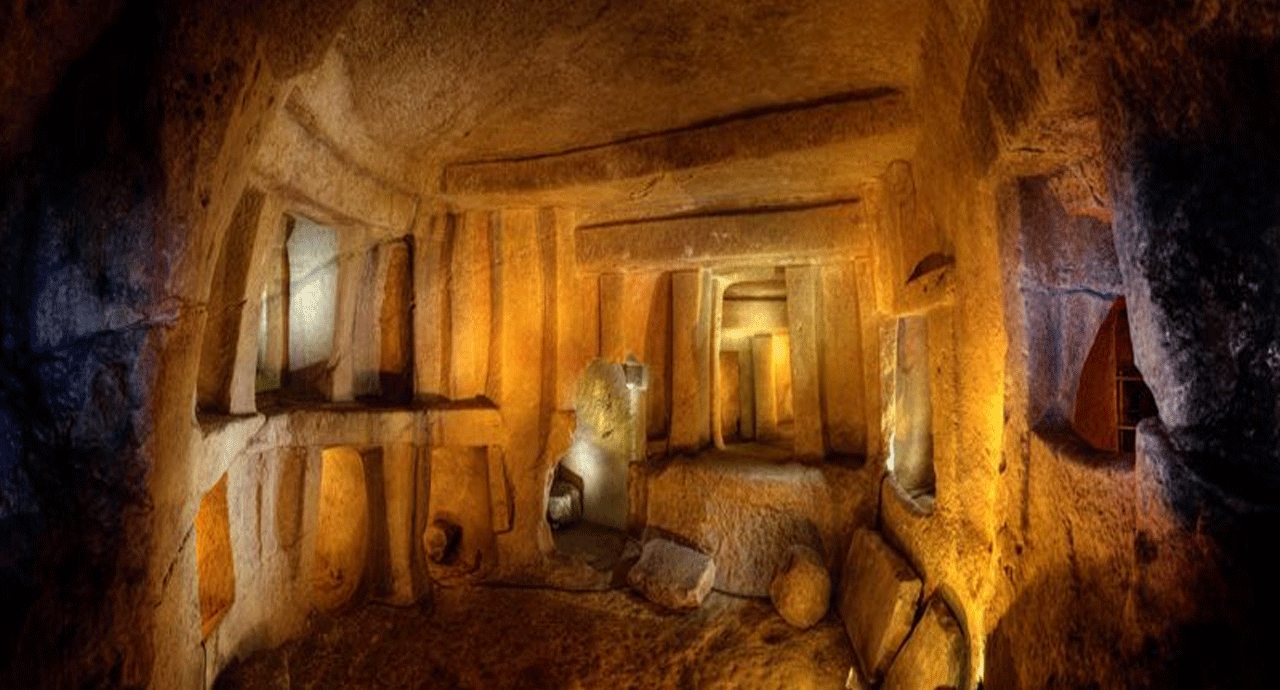Our Latest Blogs
from around the Maltese Islands
Hypogeum
Hal Saflieni Hypogeum is one of the most mysterious places in the world. If you are still wondering whether to visit it, I can assure you that it is worth visiting. The Oracle Room located there is still a mystery to modern scientists.
Hal Saflieni Hypogeum
Somewhere under the streets of Paola, lies perhaps one of the most amazing places in the world, the Hal Saflieni Hypogeum and its mysterious Oracle Room. This place was discovered in 1902, when the temple's ceiling was pierced during foundation works. The site was first explored by clergyman Manuel Magri, who led the excavations on behalf of the Museum Committee, running his work from November 1903. During the excavations, parts of the Hypogeum, including human tombs and remains, were emptied and discarded without proper cataloging. Magri died in 1907 during his missionary work in Tunisia, and his report on the Hypogeum was irretrievably lost.
Hypogeum history
The excavations were then carried out by Sir Themistocles Zammit, who tried to salvage what was left of his predecessor's 'works'. In 1910, he published a series of reports and continued his excavations until 1911. His finds were shipped to the National Museum of Archeology in Valletta. The Hypogeum was first opened to the public in 1908, when archaeological excavations were still ongoing. In fact, attempts to preserve this place for posterity began in 1991, when the Hal Saflieni Hypogeum was closed for a decade. After the last works, the place was reopened in May 2017. Why is this place so special? The Hal Saflieni Hypogeum was probably built over 5,000 years ago. Its builders partially used the existing underground cave system below the surface. Partly, this building was carved out of solid rock. The temple consists of several levels (which we know about). During its exploration, about 7,000 skeletons were found here. Another curiosity is worth mentioning here. Some of the skeletons assembled here seem to have a unique feature - elongated skulls. It is known that some of the skulls were exhibited at the Valletta Archaeological Museum. However, after 1985, all the skulls found at Hypogeum, along with other elongated skulls found at many ancient sites in Malta, disappeared without a trace and were never recovered. Currently, when asked about them, museum employees react with surprise or nervousness. Can we say for sure that these skulls are not one of the city's many legends? While researching the Hypogeum, I came across an interesting reference from National Geographic in 1924. Examination of the Stone Age skeletons shows that the first inhabitants of Malta were a race of people with long skulls of medium height. They were similar to the early inhabitants of Egypt who spread westward along the north coast of Africa, from where some of them probably they went to Malta and Sicily. Another group headed to Sardinia, to what is now Spain National Geographic Magazine. January - June 1920. Volume XXXVII. In addition to human remains, necklaces, amulets, stone axes and figurines, including the famous Sleeping Lady, were also found here. Part of the temple was hollowed out in such a way, while it resembled temples erected on the surface. Thanks to this, we can imagine how the vaults of these buildings must have looked like in the past, and how their walls were decorated. To this day, decorative motifs made of red ocher have survived on the walls of the ?al Saflieni Hypogeum. We can only guess what this place was. The central chambers probably performed a religious function. In the main chamber, the aforementioned statue of a sleeping woman was found. The deeper we go, the more secrets appear. The rooms below the level of 10.6 meters do not fully indicate for what purpose they were used. We can only suppose that they could fulfill economic or religious functions.
Hypogeum - Oracle Room
One of the strangest rooms is the so-called "Oracle Room", a rectangular room with very specific acoustic properties. Its acoustic properties have been carefully studied by scientists. All sounds that arise in this room, including whispers and chants, will be heard throughout the Hypogeum. A research team from Italy and Maltese composer Ruben Zahra concluded that the Oracle Room resonates at 110 Hz. According to Dr. Robert Jahn of Princeton University, this bizarre behavior was achieved either due to the appropriately selected dimensions of the room or due to the properties of the rock in which the room was carved. However, a question arises here - were these acoustic properties intentional? Was Hypogeum really designed to increase sound amplification, and if so why? One theory put forward by Paolo Debertolis and Niccolo Bisconti of the Universities of Trieste and Siena, respectively, is that the Oracle Room was built to produce acoustics that would affect people's psyche, perhaps to enhance mystical experiences during rituals. This hypothesis gained popularity after UCLA's Dr. Ian Cook and colleagues published the results of the 2008 experiment. The experiment consisted in examining the regional activity of the brain, using EEG, among many healthy volunteers, subjecting them to different resonance frequencies. Their findings indicate that at 110 Hz the activity patterns in the prefrontal cortex shifted sharply, causing a relative inactivation of the linguistic center and a temporary shift of left to right dominance related to emotional processing. This reaction occurred at different frequencies. Undoubtedly, the Hypogeum in Malta is a must-see for any art history lover and those who love to discover new places .

